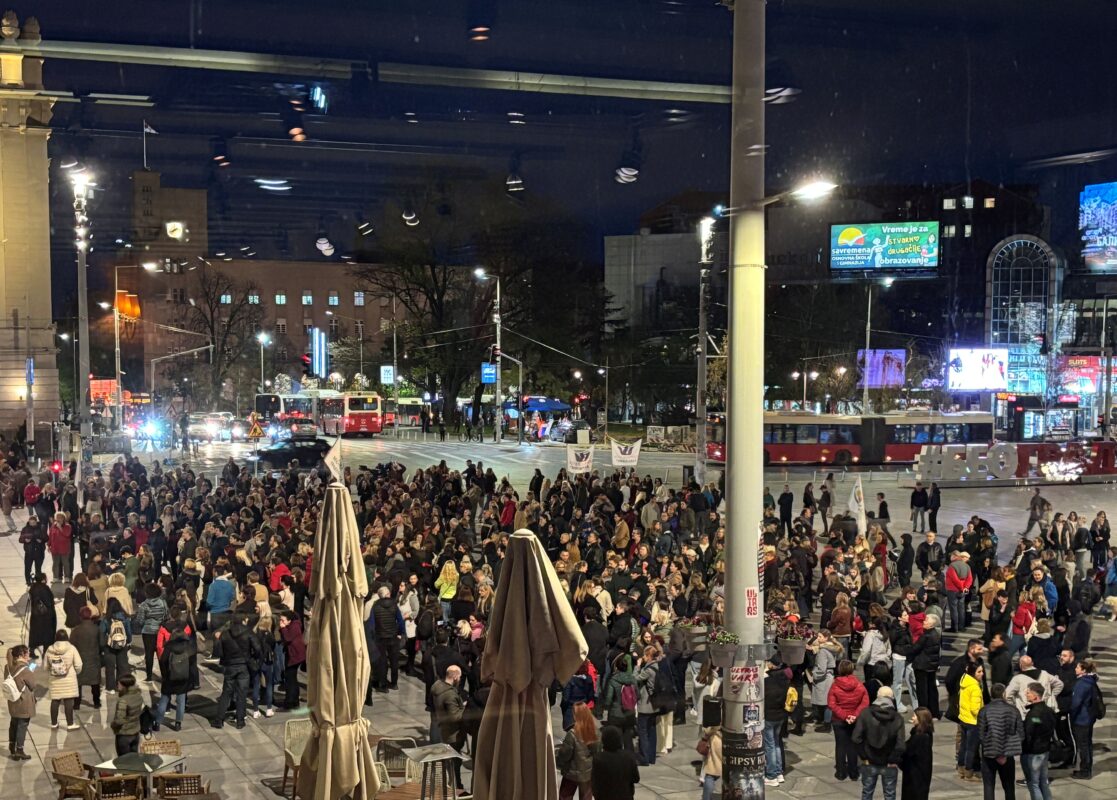Highlights of the choir fair in Dortmund
The "chor.com" trade fair took place for the second time this year, from September 12 to 15. A forum for the German Choral Association to exchange ideas and present innovations.

The chor.com program book is over 150 pages long. What at first glance appears to be a confusing amount turns out to be an inspiring reference work on closer inspection: not only are the workshops, concerts, lectures and lecturers presented here with short texts, but all the choral publishers present are also listed with their main focuses. In this way, this book goes beyond the trade fair to capture the current trends and important names in the German choral scene.
Streiflicht 1: Choral sheet music "printed on demand"
Large and small choral publishers present their new publications in the Wandelhalle. A small stand attracts attention with very special titles: with Lili Boulanger's (1893-1918) Psalm 130 Du fond de l'abîme or with the arrangements for six-part female choir of works by Gregor Aichinger (1564-1628), set by Helmut Steger (*1948). The publisher is inter-note printed on demand. Whether you are looking for an out-of-print choral work or find a specialty in an archive that you would like to perform: inter-note edits the desired edition. But you can also put together a folder for your choir or have individual volumes produced from impractical anthologies - all to order and at a good price. An interesting and very flexible type of edition that helps many a rarity to be performed without producing a surplus of copies.
Streiflicht 2: Choral singing in prison
It is hardly known that there are also choirs in prisons. At the chor.com Lia Bergmann your Master's thesis Bad people don't need songs? in which she examines German prison choirs and their effectiveness in the penal system. Bergmann studies at Berlin's Humboldt University, works as a volunteer prison assistant and is an enthusiastic choir singer herself. Of the 176 prisons in Germany, 50 offer choral singing. On average, 16 inmates sing in the choir and there is one rehearsal of one to two hours per week.
Choral singing plays a role in the rehabilitation of offenders that should not be underestimated. Using impressive interviews with prisoners, Bergmann showed what choral singing brings to the individual: For some it is an escape from everyday prison life, for others it offers a protected space in which they experience respectful interaction and do something together. Still others experience a strengthening of their self-esteem, they raise their voices without shouting and receive positive feedback from the audience.
There are two different types of choir singing in prison: the prison choirs are usually organized internally by the church, and the choir helps to organize the church service. The external choir projects are more interesting because they are more democratic and open: A choir from outside performs in the prison and sings with inmates, or an external choirmaster does a choir project in the prison. The effectiveness of this work has already been proven in an American study. Such projects result in an internal or semi-public performance, a CD recording or participation in a competition - many things are possible. However, the administrative obstacles are high and often prevent such initiatives, reports Bergmann. This is precisely where prisons could gain a lot by removing organizational hurdles.
Streiflicht 3: Heinrich Schütz Edition
The Dresden Chamber Choir is currently working on a complete CD recording of the choral works of Heinrich Schütz (1585-1672), which should be completed in 2017. At the same time, Carus-Verlag, in collaboration with the Heinrich Schütz Archive at the Dresden University of Music, is publishing a new "historically informed" edition of the complete works, supervised by Günter Graulich.
On the basis of a performance and a workshop on the Musical Exequia in Dortmund's St. Marienkirche gave an exciting insight into the work of Hans-Christoph Rademann and his Dresden Chamber Choir. Rademann performed some parts of the Coffin song He used these examples to comment on Schütz's vivid setting, which "depicts" the meaning of the biblical text in an ingenious and surprisingly concrete way. He also let the solo singers have their say: What was it like for them, who usually sing the usual operatic repertoire, to empathize with this old music, to sing it differently? And what "tricks" does the organist use to make the continuo sound "pictorial"? In this workshop, not only was the grandiose quality of the Dresden Chamber Choir evident to the ears, but Schütz's music revealed an incredibly colorful and meaningful sonority.
Streiflicht 4: Leo Kestenberg's writings
Leo Kestenberg (1882-1962) was an influential music lecturer in the Weimar Republic, who became a visionary pioneer of modern music education after the First World War and initiated the corresponding improvements. These were implemented at chor.com by the International Kestenberg Society and questioned as to their relevance today: Kestenberg's ideas on music education are as controversial today as they were then.
The last volume of Kestenberg's collected writings, edited by Wilfried Gruhn, has also been published just in time for the choir fair. This fourth volume contains all the official decrees and regulations that Kestenberg wrote to reform the Prussian music system and improve the training of music teachers - valuable reading for anyone concerned with the reform of music education.
Spotlight 5: Movement moves
Many workshops dealt with youth choir work. How do you get children and young people to sing? And how do you inspire joy without pandering? Movement movest by Werner Schepp showed a simple, innovative method: if you move to a rhythmically difficult song, i.e. step along to the basic rhythm or perform movements that match the lyrics, you learn it more easily, adopt the right posture for singing in a playful way and understand the rhythm from the movement. In addition, the group is experienced differently through movement: Team spirit is encouraged and it's fun. The children often become creative in this way, invent new steps to the song and get involved. (Folkwang University of the Arts)
Streiflicht 6: New vocal magazine
The German Choral Association has recently started publishing its own magazine: Choir time. The vocal magazine. The first issue was distributed at chor.com. The magazine is primarily themed and not an actual association magazine. It presents exciting choir projects and concerts, provides many suggestions for choir directors and publishes informative background reports that encourage further thought - in short, a lively choir magazine with a lot of substance. The monthly magazine, edited by Nora-Henriette Friedel and Daniel Schalz, will be available in stores and by subscription from January 2014.








